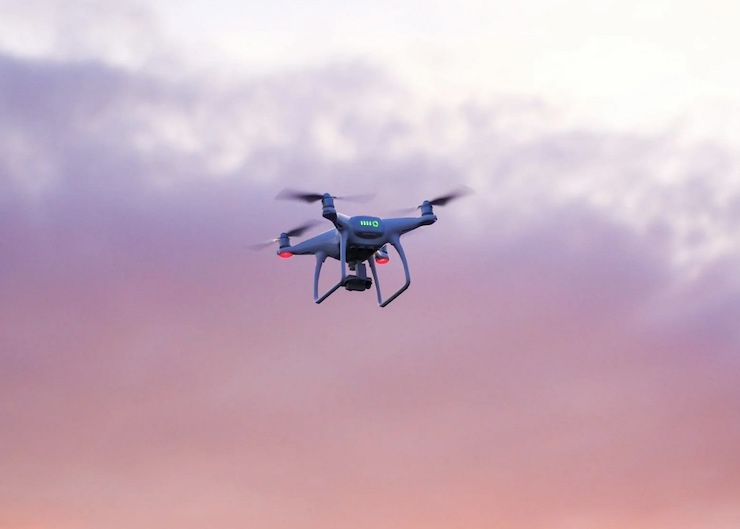The Importance of Being a Compliant Drone Operator

Drones are more popular now than ever before. According to the Federal Aviation Administration’s (FAA) records, as of February 2024, there are 781,781 drones registered in the United States of America. Of these registrations, 375,226 are under commercial licenses while a whopping 400,858 are registered for recreational use. Assuming that only represents a fraction of recreational drone operators who have registered their drones, further surveys conducted by the FAA found that nearly 8% of Americans own a drone.
For around $300, half of what it costs to buy an iPhone, anyone can purchase a high-quality drone. For many who purchase a drone, as the data presented by the FAA proves, they know to register the device and properly train themselves to be compliant drone operators. As per FAA regulations, any drone weighing over 250 grams (0.55 lbs) must be registered. For example, this rule would exempt a DJI Mini 4K drone from needing registration. However, these small drones are still subject to the rules and regulations that any larger drone must abide by.
The temptation to start flying a drone straight out of a box may be strong, but it is important to have an understanding of FAA regulations beforehand. For larger drones that need registration, many will opt to get a Part 107, the license that proves a drone pilot is aware of and will maintain compliance with all FAA drone regulations. Having a Part 107 will also allow drone pilots to operate a drone for commercial gain. Apart from that, there are basic safety rules that all drone pilots, regardless of age or how they intend to use a drone, must follow.
Some of these rules, which can be easily found on the FAA’s website, are to never fly a drone near manned aircraft or over crowds of people. The drone must always remain within your line of sight and avoid restricted airspace. The website goes on to state, “You can fly during daylight (30 minutes before official sunrise to 30 minutes after official sunset, local time) or in twilight if your drone has anti-collision lighting. Minimum weather visibility is three miles from your control station. The maximum allowable altitude is 400 feet above the ground, higher if your drone remains within 400 feet of a structure. Maximum speed is 100 mph (87 knots).”
These are just some of the basic guidelines, all of which are meant to keep drone operators, bystanders, and property safe. One of the biggest mistakes people make before flying a drone is not checking if they are flying in a no-fly zone. These are typically areas surrounding airports, government buildings, and critical infrastructure sites. For instances when a drone is commercially needed in such spaces, waivers can be granted upon occasion, but they are always blocked for recreational drone use.
Another area that many forget is a drone no-fly zone is the space over groups of people. While it may seem like a great idea to capture images with a drone over a crowd gathered for a graduation, parade, or other event, it poses safety risks and is therefore banned. Unfortunately, for a 25-year-old man attending this year’s Hangout Music Festival in Gulf Shores, AL, he either was unaware of this rule or chose not to abide by it. As explained by Detective Carl Wittstruck of the Gulf Shores Police Department, flying a drone along any Gulf Shore beaches or over public venues in Alabama is strictly prohibited.
Police monitoring the 3-day festival first saw the drone when the pilot decided to interfere with a sanctioned police drone. The Gulf Shore Police Department had been granted a special waiver by the FAA to use drones over crowds to monitor for safety during the festival. Detective Wittstruck stated, “He actually buzzed our (police) drone, like in Top Gun. I don’t know if he knew it was our drone or not, but probably not a smart thing to do.” If the brazen drone pilot had stopped using the drone after that incident, he probably would have gotten away with it. Detective Wittstruck said he and his fellow officers took note of the approximate location they believed the drone was being launched from. The following day, the man once again launched the drone from the same area, allowing police to locate and apprehend him.
The majority of drone pilots in the US understand and respect drone compliance laws. But as Detective Wittstruck said, “You don’t know what the training or experience level is of some of these hobbyists. Certainly, there are those who are proficient, understand what they’re doing, and follow the laws and regulations. But there are certainly others who don’t.” For the drone industry to continue having positive growth and impact, drone pilots of all levels must adhere to the laws set forth by the FAA. These regulations have been carefully created to ensure that the drone industry continues to prosper while meeting all safety concerns.
|